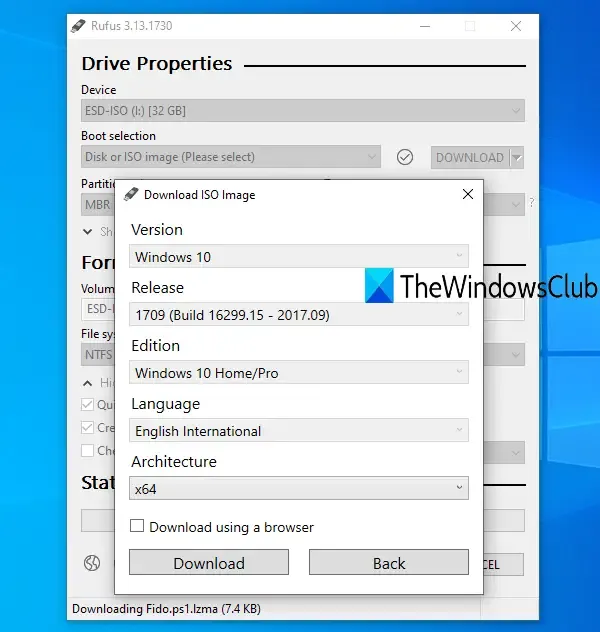How to Dual Boot from Different Hard Drives

A dual-boot solution allows us to run several operating systems on a single set of hardware without the need for extra hardware, lowering total cost.
We’ll install Windows and Ubuntu in this article, but you may do the same for any two operating systems.
Dual Boot on Separate Hard Drives
Dual booting on multiple hard drives is suggested for a variety of reasons. It provides more room for operating systems, minimizes clusters on the partitioning table, and eliminates the necessity for data backups for the installed OS because you will not be changing it. As a result, we will also learn how to dual boot on different Hard Drives.
Prerequisites
Before enabling dual boot in Windows, some conditions must be met, such as having adequate space on both drives (a minimum of 50GB is suggested), limitless Internet bandwidth for downloading updates, and a Windows bootable medium, often a CD or USB drive (USB is preferred).
After checking all of the boxes in the Requirements section, proceed with the procedures below to enable dual booting from multiple hard drives.
- Make the bootable media from Windows ISO
- Make the bootable media from Ubuntu ISO
- Install the operating system
Let us talk about them in detail.
1] Making the bootable media from Windows ISO

If we want to do a dual boot, we’ll need a bootable device. CD or DVD drives were once utilized for bootable reasons. Nevertheless, a USB drive is now utilized to make it bootable. To create bootable media, follow the instructions outlined below.
- First of all download the ISO file from Microsoft’s website (microsoft.com).
- After downloading the ISO files from the website, you will need to flash the file to the USB drive.
- First, we need to download and install rufus.ie.
- Click on the Select button, navigate to your ISO file, and add it.
- Fill in all the required blanks and then click on Start.
Go to the following step once you’ve generated a bootable Windows stick.
2] Make the bootable media from Ubuntu ISO
- Download the ISO file from Ubuntu’s official (ubuntu.com).
- Once you download the ISO files, connect the USB drive to the laptop USB port.
- Use Rufus to make a bootable USB drive.
Let us now study how to install bootable Windows and Ubuntu sticks on your PC.
3] Install the operating system
In two separate circumstances, we will need to install an operating system on a dual boot device. The first scenario involves using Ubuntu as our major operating system, whereas the second involves using Windows as our primary operating system. Let us go through both of these circumstances in depth.
If the computer’s primary OS is ubuntu.
Follow the prescribed steps to install the Windows operating system on our second hard disk.
- First of all, insert Windows bootable USB drive into the computer and restart.
- Now enter the boot menu by pressing F2, F12, DEL, or ESC key(Different manufacturers has a different key to enter into the boot menu).
- Here, select a USB device from the listed drives and press the enter button.
- Select the second hard disk on which you want to install the Windows operating system and then click next.
- Follow the on-screen instruction and wait until the installation is completed.
Your computer will restart automatically after the installation is complete. Eventually, the bootloader menu will open, allowing you to select which operating system to boot.
If the computer’s primary OS is Windows.
If the system’s initial operating system is Windows and you wish to install Ubuntu on the second hard disk, follow these steps:
- Install Ubuntu USB bootable stick.
- Boot into BIOS.
- Select a USB device from the listed drives and press the Enter button.
- Here, select Ubuntu and choose your language and other preferences and continue until you see the following screen.
- Select the Erase disk and Install Ubuntu radio button and click Install Now.
- Now we should select the second hard drive on which you want to install Ubuntu.
- A warning prompt will appear that notifies you about the partitions that will be formatted, click on Continue.
- Finally, set the time zone and login details to complete the installation process.
When the installation is finished, the GRUB bootloader menu will display on the screen, from which you may pick the operating system of your choosing.
This allows you to run numerous operating systems on separate disks.
Can you dual boot on different hard drives?
Yes, you can dual boot on various hard drives. Just install several operating systems on different disks, and when the system boots up, you will be prompted to select which operating system to boot from.
Is it better to dual boot from different drives?
Having dual boot is advantageous, especially if you work with large files. It also assures minimal clusters on the partitioning table and enhances overall system performance.


Leave a Reply